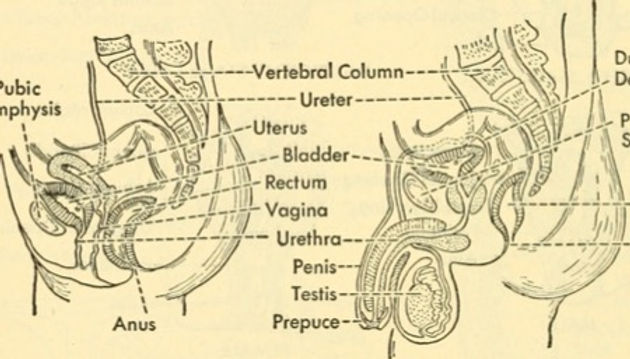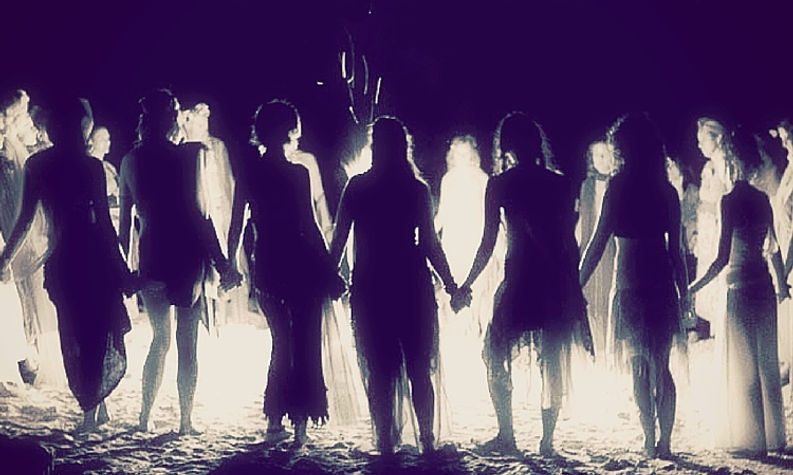
What is a woman?
A woman is an adult human female. From the moment of her conception, she received XX chromosomes and unique DNA that would dictate the development of her skin, hair color, eyes, reproductive organs, bone, and body structure. This genetic blueprint forms the biological foundation of her being.
A woman's capabilities are vast and varied. Her life is not confined by traditional social gender roles; instead, she thrives in multiple dimensions as a daughter, and is often a mother, grandmother, niece, or aunt. Her potential in the professional world is boundless, limited only by her imagination and determination. She is powerful and versatile, a creator of future generations, an educator, and a nurturer.
Her body is intricately designed for the miracle of childbirth; the shape of her pelvis, the cycle of her menstruation, and her hormones are all harmoniously tuned to support her in loving, holding, and bringing forth new life.
A woman is a gift to the world, her presence invaluable and irreplaceable. She is resilient, capable of withstanding and overcoming immense challenges. She embodies strength and grace, she has a profound capacity to endure and persevere in the face of adversity.
Women have an extraordinary ability to nurture, with bodies equipped to carry, birth, and feed children. The hormones estrogen and progesterone play crucial roles in this process, underscoring the biological intricacies that support her role as a life-giver. This remarkable capacity underscores the profound and irreplaceable value of women in society.
Women are integral to the fabric of humanity, their roles multifaceted and their contributions immeasurable. They are pillars of strength, compassion, and creativity, vital to the continuity and enrichment of the world around them.
Her sex, deeply embedded in her very essence, cannot be changed, nor should there be a desire to alter it, for it is a fundamental aspect of her identity, her future and all that she is.
It is so unfortunate that there is a current trend whereby some women wish to not be women, and as such are being robbed of their potential, their future. She may take synthetic hormones that will deepen her voice, widen her neck, make hair grow on her face, have surgery after surgery to be able to pass as a man. Yet for all that she does to try to run from her destiny, her anatomy and her biology, she will always be a woman.
These women may think that they are being progressive, but don't they see that they are being used to deconstruct langauge & destroy the rights and rituals unique to women. A beard and hormones can't change your biology. They are and will always be #XX https://stayingyou.wixsite.com/staying-you/about-9
The woman in this image has gone to enormous lengths to pass as a 'man.' Yet, for all that she has had to experience—her double mastectomy, hysterectomy, and the grafting of skin from her thigh to create a non-functional 'penis'—she remains a woman. One can't even begin to imagine the pain she has endured to look the way she does: the hospital appointments, the pain of recovery from each and every surgery, the high risk of infection, and the antibiotics she will need to take for continued infections from her broken urethra. The excruciating pain from her grafts healing. She will have incontinence from the destruction of her pelvic floor, painful sex, atrophy, and osteoporosis from the loss of oestrogen to her bones. Yet for all her efforts to run from her anatomy, to be her authentic self, she is now on a life long medical pathway and will need continuing medical intervention and synthetic hormones. Although she pass as a 'man' when clothed, she has, and will always have, XX chromosomes, and the DNA in every one of her cells confirms that she is a woman.
These pictures display a woman's anatomy's miraculous ability to regulate itself, to fight back. This woman has had a double mastectomy and has been on the hormone testosterone. Being on testosterone stops most women from menstruating and causes women to go into early onset menopause and to become infertile. She is very fortunate that, in spite of the medical pathway that her body has been on, for her to identify as a trans man, she is still able to have a child. She will never be able to breast feed. Many women who detransition, who stop having testosterone, find that the effects of testosterone and surgeries are irreversible. They may never have children and such a loss rests heavily on their hearts, their relationships and their future.
FOR ALL THAT WOMEN MAY TRY TO DO TO RUN FROM THEIR BIOLOGY THEY ARE AND WILL ALWAYS BE WOMEN
As you can see from this chart, the skeletal structure of females and males is vastly different and no amount of surgery can make a man a woman or a woman a man.
In not just her bones, but biological science supports this intrinsic nature; through her blood, bones, and urine, scientists can determine her sex as female.
In the chart below we see the differences between the male and female reproductive organs, no amount of surgery has the capacity to make a woman a man and man a woman, their bodies are far too physiological and biologically different.
The unique capacity to nurture life and support the growth of the next generation is exclusive to those born with XX chromosomes - a woman. While some men, individual's born with XY chromosomes, may wish to walk a path where they identify as a woman, being a woman is not something that can be imitated or impersonated through taking a concoction of synthetic versions of women's hormones or creating external changes through an array of surgeries and wearing wigs and dresses. These individuals cannot and should not think that by pretending to be a woman they are allowed the passage of rights, culture, and traditions of women as these are deeply rooted in women's biological, experiential realities and histories.
Stand up for women's sports and single sex spaces








Compared to women, men have stronger foreheads, higher, broader, and more protruded due to the shape of their forehead frontal bone. The bony brow ridge, running above the eyes from side to side on the more protruded forehead of a man, builds a slope in men’s brow and a steeper angle with the nose, all causing eyes to be deeper-set. However, a softer brow ridge or the absence of this bony ridge in women gives the forehead a vertical or rounder and smoother appearance. The more open angle between nose and forehead in women is also due to the less pronounced brow ridge.






Woman
Female
Pronouns
She/Her



What are pronouns and why are people putting them after their names?
- Mel Day (She/Her, He/Him, They/Them)?
Good Question!
Pronouns are short cuts used in speech so that we don't have to keep repeating a person's name when we talk about ourselves or others.
-
We all have first person pronouns, 'I' and 'me'.
The second person pronoun, 'you' is used when we are talking directly to a person.
-
"You are making a difference!"
Third person pronouns are used when we are not talking directly to a person, but about them to another person. In the English language we use, 'she' and 'her' in our sentences to talk about, either a girl or a woman, who is either present with us in the room or absent.
-
"This is Mel Day, she is a sociologist, her favourite sport is roller derby"
-
"Have you heard of Mel Day? She had breast cancer, the treatment made her very sick".
We use 'they' and 'them' in a sentence to describe someone in past tense or as a group plural.
-
"I went to the shop yesterday, I was helped by the check out person, they were very kind, I told them that they had made my day!"
-
"I love all of my friends! It's great being around them, they are all so funny!"
The following sentence does not make sense and is confusing as it doesn't follow the rules of English grammar and speech.
"This is Mel Day, they like helping others, it's them favourite thing to do" - you are left wondering how many Mel Days there are, is there a whole group of people all called Mel Day?
People's use of when to use pronouns, when talking about others, is their own business. Telling someone to use your preferred pronouns is not respecting the rules of English grammar or the speech of others.
You can't own a pronoun
